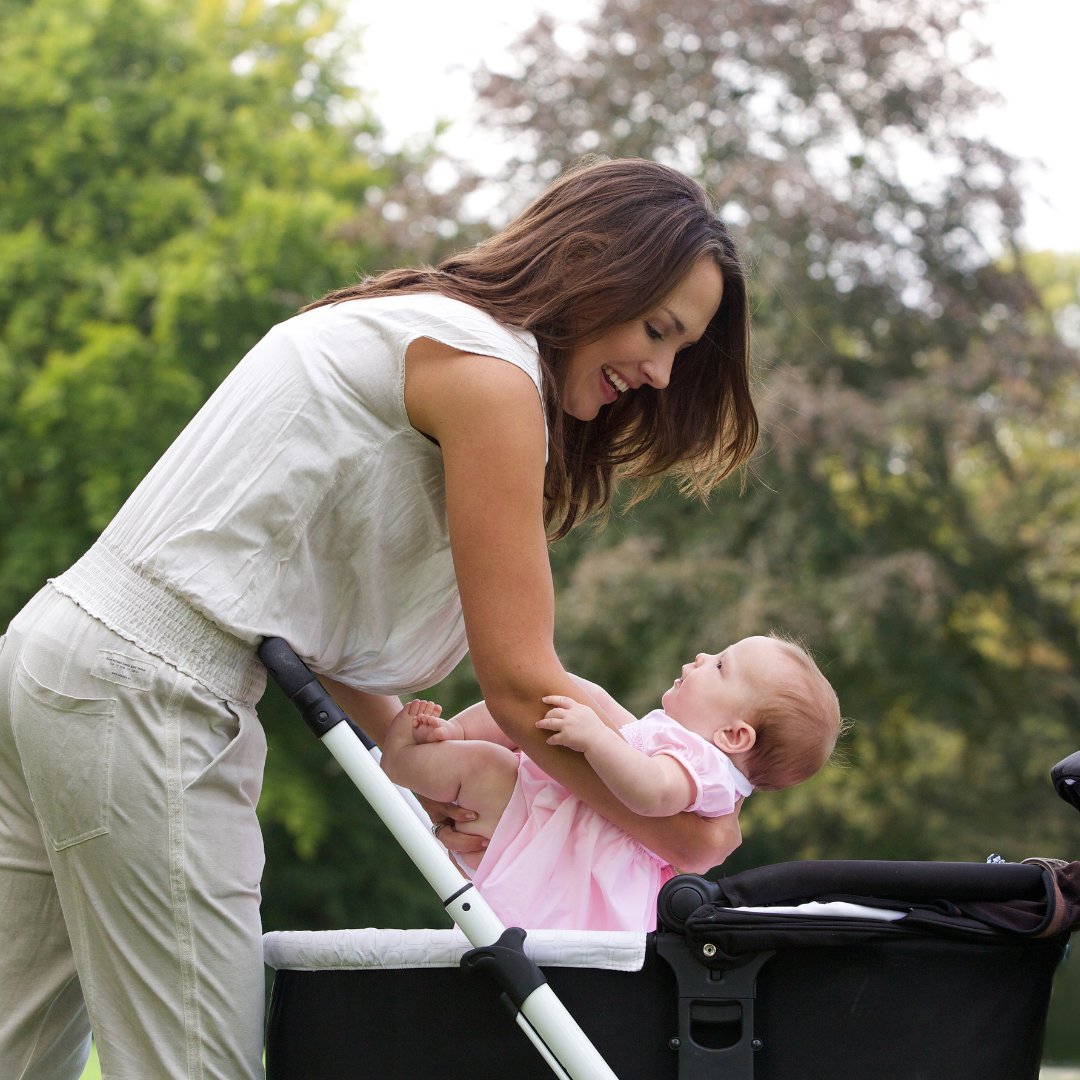Ready to harness the benefits of the outdoors?
Try these age-appropriate outdoor activities:
Newborns
Take a walk around the neighbourhood, pointing out different smells, sounds, and sights. Talk, sing, and describe what you can see, hear, and smell. Talking to your baby from birth improves language processing and boosts future vocabulary.
Babies
Place a blanket or picnic rug on the grass and encourage your baby to explore tummy time in the fresh air. They'll encounter new things to see and hear. Plus, tummy time helps your little one develop strong neck and core muscles.
Toddlers
Try a spring sensory walk. Take your toddler to a nearby park or nature space and encourage them to explore. Show them different plants, bugs, and birds. Encourage your child to touch and feel various natural textures, like the bark of a tree or the softness of grass.
These outdoor activities are a fun way to bond, learn, and enjoy nature. And always remember to make sure they're safe while exploring outside.
Have your own outdoor baby activity ideas? Share them with us in the comments below, or check out our other parenting tips!
References:
Bento, G., & Dias, G. (2017). The importance of outdoor play for young children's healthy development. Porto Biomedical Journal, 2(5), 157-160. https://doi.org/10.1016/j.pbj.2017.03.003
Pellegrini, A. D., & Smith, P. K. (1998). The Development of Play During Childhood: Forms and Possible Functions. Child Psychology and Psychiatry Review, 3(2), 51-57. https://doi.org/10.1111/1475-3588.00212

